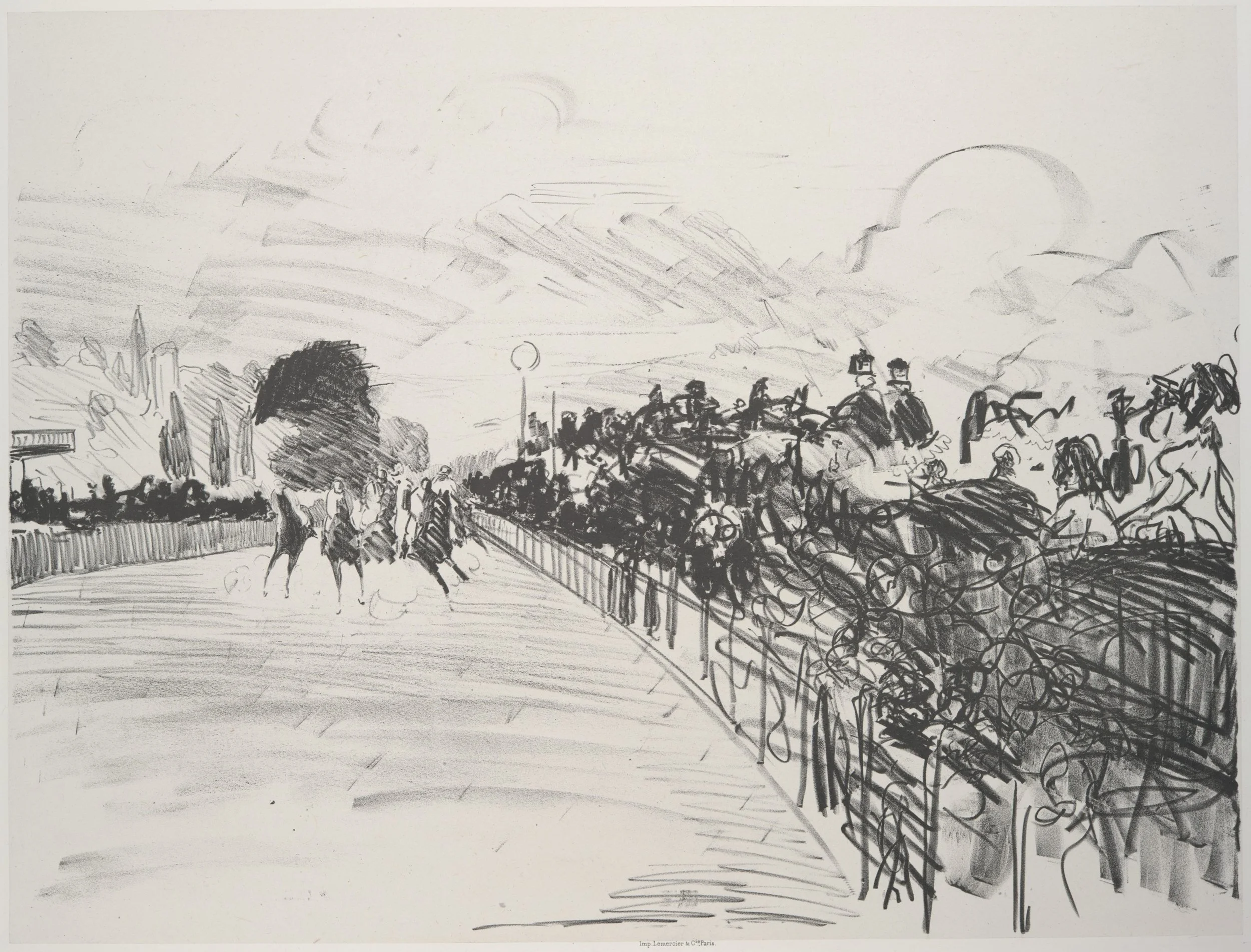printmaking - planography
Planography prints are created by printing from a smooth, flat surface.
Planographic techniques –including monotype printing and lithography – are characteristic for their unique marks which can mimic a drawing or watercolour quality.
Lithography is based on the premise that oil and water don’t mix so artists use lithography crayons, tusche or any similar material containing oil, wax or fat to draw on the matrix. The entire surface is then dampened with water, which the ink avoids and instead sticks only to the oil-based design.
One examples of lithography is The Races by Edouard Manet.
Edouard Manet, The Races, 1865–72, published 1884, lithograph on chine collé, 53 × 68.3 cm.
just try it!
Apply a thin layer of ink onto a smooth, flat surface, like a piece of glass. Tape the surface firmly to a table or the ground using masking tape to keep it from moving. Place a piece of paper gently against the glass and begin to draw your design with a pencil, your finished print will be a reverse image of this design. Remove the paper to reveal your monoprint! To add more colour and detail, feel free to develop the image using oil pastels or colour pencils.

